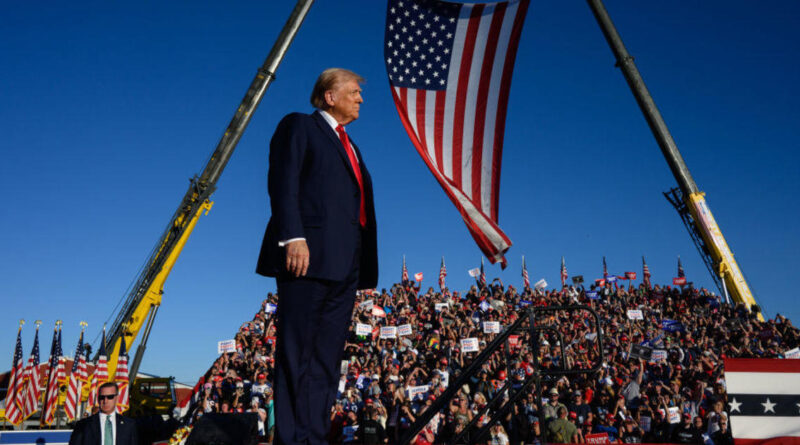Reporters’ notebook: A reflection on our return to Butler 84 days later
It was hard to miss the massive American flag towering over the Butler Farm Show ground on July 13 as it waved over the rally site where former President Donald Trump was set to speak, just days before a crucial running mate selection and the Republican National Convention.
On July 13, the two of us, who had been tag-teaming coverage of Trump’s third run for president for over a year, went to what we thought would be a typical Trump rally in an open field in a Pittsburgh suburb, a crucial electoral area in a crucial battleground state. It ended with a gunman trying to take Trump’s life, and the death of a fireman, Corey Comparatore.
We stood front and center in the press area at 6 p.m. and Trump took the stage (an hour late, as can be the case) and knew right away that something wasn’t right when what sounded like firecrackers went off to our left. That’s where shooter Thomas Crooks had climbed up onto an unprotected building just outside of the security perimeter and fired multiple shots.
A hydraulic lift that held up a massive stack of speakers was struck, sending smoke shooting out and the speakers slowly fell towards the ground, and as we took cover, all we could think was to pull out our phones and get to work. Olivia recorded the sounds of panicked journalists and attendees alike huddled along the press riser and bicycle racks separating us, the shrieks of scared children, and, realized only upon listening many times since, the sound of those around Corey Comperatore yelling for assistance.
Jake spoke with emergency room Dr. James Sweetland, who ran to help Comperatore, and said that he heard the gunshots and went to assist, finding Comperatore “jammed between the benches” before attempting to save his life.
We both stood in shock as the crowd turned on us in the moments after Trump’s motorcade sped out of Butler, with one man yelling “This is your fault!”
What was to be a typical Trump rally wasn’t so typical anymore.
Eighty-four days later Trump returned, and so did the two of us, taking the same route from downtown Pittsburgh, parking in the same location, and enduring a similar heat with no shade in the press pen alongside fellow reporters who, just like us and the former president, chose to return and confront our trauma.
The stage was set up in the same location, with that same American flag looming over Trump and the crowd behind him on that day.
But for everything that was the same that day, there were striking differences. The building where the gunman had climbed up, crawled across, and ultimately fired fatal shots, was completely obstructed from the view of the crowd by tractor trailers. Several teams of snipers were stationed throughout the rally site. It was perhaps the largest crowd we have seen thus far at a Trump rally.
And we are not the same people. Witnessing the events of July 13 took away our feeling of safety while doing our jobs, and the effects of that continue to impact us. There was a moment of shock at one point, when the speaker on stage paused as the crowd shouted “medic” for a woman who fainted. We were frozen in fear hearing the same words that were shouted in the seconds after Trump’s assassination attempt, as people were shouting for a medic to take care of Comperatore.
But like July 13, we had to go to work. Like those in the crowd of tens of thousands that chose to return, there was a sense of unfinished business on this fairground. We had continued on to Milwaukeee and the Republican National Convention to cover Trump’s first public appearance since Butler, but we knew that we had to come back here, no matter how painful it was to land back in Pittsburgh, head north on Route 79 and pull off at the Butler Farm Show, and finish the job: for the two of us, for CBS News, for the country.
Unlike other speakers on the stage Saturday who championed Trump’s words of “fight, fight, fight,” Sweetland went out of his way to mention he is a former Democrat and pleaded with the crowd to reach out and find five Democrats with whom they could find commonality.
“Democrats are like teenagers,” Sweetland said. “You think they aren’t listening, but they are.”
Eighty-four days later, the entire race has changed, and so have we.

